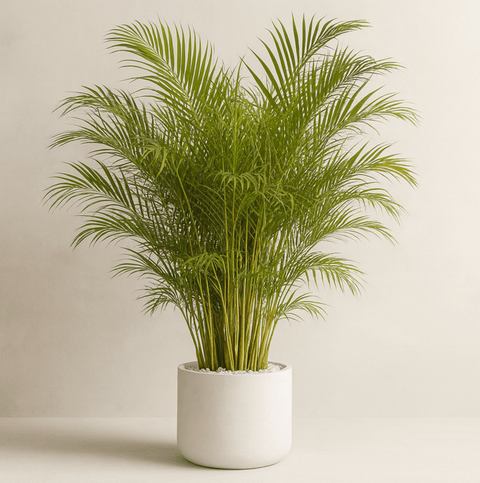Fall is a season known for its breathtaking display of colors, and few trees contribute as much to this spectacle as the Red Oak (Quercus rubra). These magnificent trees boast vibrant autumn foliage that ranges from deep red to rich orange and russet hues. In this post, we’ll guide you through the process of planting and caring for Red Oaks to ensure they put on the best fall show year after year.

1. Understanding the Red Oak
1.1 Botanical Overview
The Red Oak, scientifically known as Quercus rubra, is a species of deciduous tree that is native to North America. It typically grows to a height of 60 to 75 feet, with a rounded crown and a growth rate that is moderate to fast. Its leaves are large, deeply lobed, and turn stunning shades of red and orange in the fall.
1.2 Importance in Ecosystems
Red Oaks play a vital role in supporting local wildlife. Their acorns provide food for animals such as squirrels, deer, and various bird species. Additionally, Red Oaks help improve soil health by adding organic matter and increasing biodiversity in the ecosystem.
2. Benefits of Planting Red Oaks
2.1 Stunning Fall Color
The primary reason many gardeners plant Red Oaks is for their gorgeous fall color. As the temperatures drop, the leaves turn from green to a brilliant red-orange and russet, creating a vibrant display that enhances any landscape.
2.2 Longevity and Robustness
Red Oaks are known for their durability and long lifespan, often living for more than 200 years. Their resilience to environmental stressors like wind, drought, and pollution makes them a reliable choice for landscapes.

2.3 Environmental Benefits
Red Oaks contribute to the environment by sequestering carbon, providing shade, and preventing soil erosion with their extensive root systems. They are excellent for both residential and public spaces looking to improve environmental health.
3. Ideal Conditions for Planting
3.1 Best Climate Zones
Red Oaks thrive in USDA hardiness zones 3 to 8, making them suitable for a wide range of climates. They can tolerate cold winters and hot summers, but perform best in temperate regions.
3.2 Soil and Sunlight Requirements
Red Oaks prefer well-drained, loamy soils that are slightly acidic to neutral. They require full sun to partial shade, with at least 6 hours of direct sunlight per day for optimal growth.
3.3 Spacing and Location Considerations
When planting Red Oaks, ensure they are spaced at least 30 to 40 feet apart to allow room for their mature canopy. They are ideal for open spaces, parks, and large residential yards where they can grow without obstruction.

4. Planting Red Oaks
4.1 When to Plant
The best time to plant a Red Oak is in early spring or fall, when temperatures are cooler and rainfall is more consistent. Planting during these seasons allows the tree to establish roots before the heat of summer or the cold of winter.
4.2 Preparing the Planting Site
Start by clearing the planting area of grass, weeds, and debris. Dig a hole that is twice as wide and just as deep as the root ball of the tree. Loosen the soil at the bottom of the hole to encourage root growth.
4.3 Step-by-Step Planting Guide
- Place the tree in the hole, ensuring that the top of the root ball is level with the surrounding soil.
- Backfill the hole with soil, tamping it down gently to remove air pockets.
- Water the tree thoroughly to help the soil settle around the roots.
- Apply a 2-3 inch layer of mulch around the base of the tree, keeping it a few inches away from the trunk.
- Water the tree regularly, especially during the first few years, to establish strong roots.
5. Caring for Your Red Oaks
5.1 Watering and Mulching Practices
Young Red Oaks need regular watering to keep the soil evenly moist. Mulch helps retain moisture and regulate soil temperature, reducing the need for frequent watering. Apply fresh mulch each spring.

5.2 Pruning Techniques
Prune Red Oaks during late winter or early spring to remove dead or damaged branches and to shape the tree. Avoid heavy pruning as it can stress the tree, especially when it's young.
5.3 Pest and Disease Management
Red Oaks are generally hardy but can be susceptible to pests like scale insects and diseases like oak wilt. Monitor your tree regularly and address issues early with appropriate treatments, such as insecticidal soap or fungicides.
6. Enjoying the Fall Foliage
6.1 Seasonal Observations
As the days shorten in the fall, keep an eye on your Red Oak as its leaves begin to change color. The vibrant display usually peaks in late October, offering a striking contrast to the browns and yellows of other trees.
6.2 Creating a Fall Viewing Spot
Enhance the beauty of your Red Oak by designing a fall viewing area. Place a bench or seating area nearby, and consider adding other fall-blooming plants and shrubs for an even more colorful landscape.

Conclusion
Planting a Red Oak is a long-term investment in both your landscape and the environment. With proper care, these trees will reward you with vibrant fall foliage for generations to come. Consider adding a Red Oak to your garden and enjoy the seasonal beauty it brings.
Do you have any questions or experiences to share about planting Red Oaks? Let us know in the comments section below!
Call to Action
If you enjoyed this post, feel free to share it on social media! Don't forget to subscribe to our blog for more gardening tips and seasonal guides.























Comments (0)
There are no comments for this article. Be the first one to leave a message!